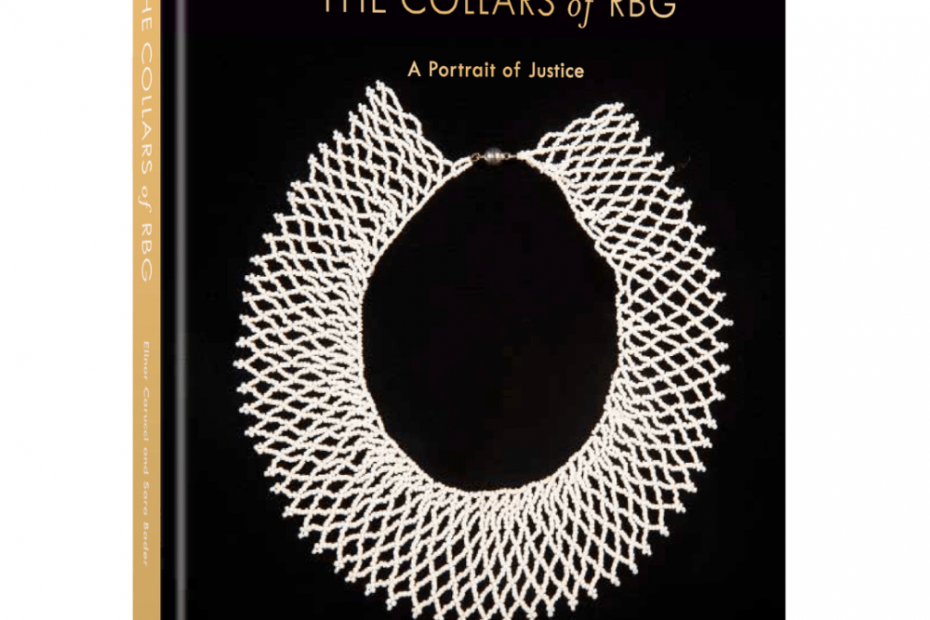The judicial collar was introduced by Supreme Court Justice Sandra Day O’Connor, and is one of the most iconic pieces of clothing for any female judge. For Justice Ruth Bader Ginsburg, the collars were a symbol of her tireless work on America’s highest court.
Elinor Carucci is an Israeli-American photographer of Mizrahi Jewish descent, who immigrated to New York in 1995. She has garnered awards from the ICP (2001), the Guggenheim Foundation (2002) and NYFA (2010), and in 2020 she photographed 25 of Ginsburg’s famous collars, which fill the new book The Collars of RBG by Carucci and Sara Bader. The photographs are currently on view at Edwynn Houk Gallery, and the collars will be on view at the Jewish Museum of New York starting tomorrow through May 28.
“With her penchant for unlocking private relationships through intimate details, Carucci frames Ginsburg’s neckwear as evocations of symbols of her position,” states the gallery. “The bold, ornate and subversive collars she chose to wear on the bench communicated so much more.”
RBG’s collars have great historical significance. They were worn during her earliest argument for gender equality to her support of immigration and marriage equality throughout her 27 years on the bench.
I asked Carucci to speak about this unique testament to a legendary warrior for American justice.
Where did the idea to photograph Ginsburg’s famous collars come from?
It began as an assignment for Time magazine that was given to me by Katherine Pomerance. And it was actually an unusual assignment for me because I am not a still-life photographer. And Katherine was like, “I have this incredible assignment. But it’s different than what you’re doing.” So I feel that in a way, it was more who I was as a humanist. I mean, I photograph people. And usually my work, especially for magazines, deals with the human condition—families who’ve been through something.
Wild lace collar from Johannesburg by artist Kim Lieberman, 2021.
Why were you given the assignment?
I’m a feminist. I’m a woman. I’m Jewish. I didn’t know. I guess it was more of ‘who I am’ than how I photograph. But when I realized, you know, that this is the assignment … Ruth Bader Ginsburg was someone we highly admired (me and my daughter and my family), and always looked up to. She was an inspiration. Once I accepted that assignment, Katherine and I thought about how to best photograph the collars.
Pride Collar (2016), 2020.
Where did you get the collars?
Some were back at the Supreme Court, [many were] no longer there. They were given to different law clerks and friends and family members. And we saw pictures of them in the drawers, and the drawers had black velvet. And so we thought about photographing them on black velvet.
South African Collar: Ginsburg’s favorite collar, worn in her official portrait, 2020.
Who commissioned the collars? Did RBG have her own embroiderer or manufacturer?
Most of the commissions were done not by Ruth Bader Ginsburg herself, [but] by her law clerks, or Columbia Law School. She might have bought a few in the beginning, but the commissions were done by other people. There was one for [each of her] 25 years [on] the Supreme Court. Kim Lieberman, one of the artists, did a collar of white lace for RBG that was given to her through a supreme justice from South Africa.
Stiffelio Collar, the Metropolitan Opera, 2020.
Columbia Law School gift for 25th Anniversary on the Supreme Court, 2022.
Husband Marty Ginsburg’s words, “It’s not sacrifice, it’s family”, 2020.
